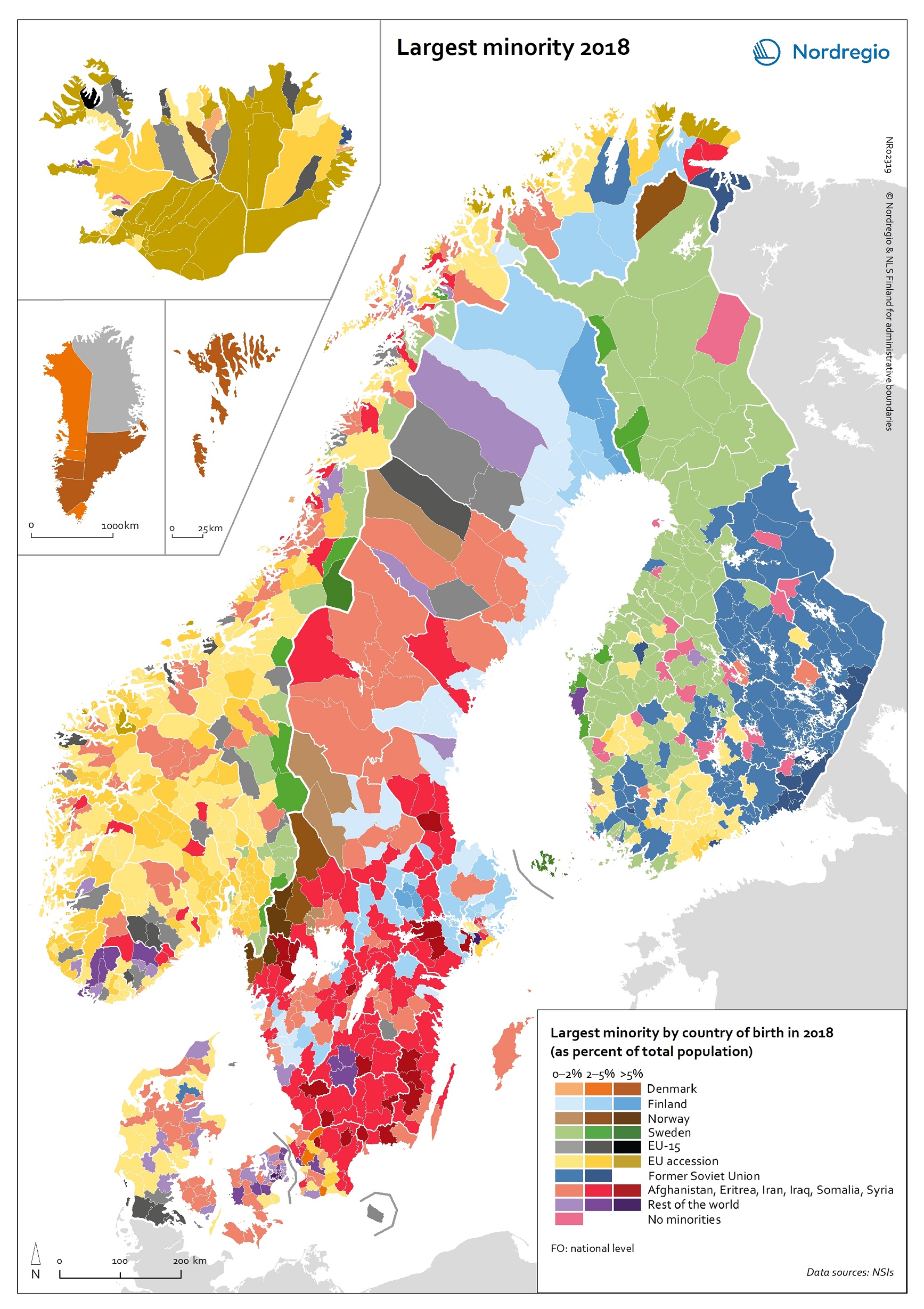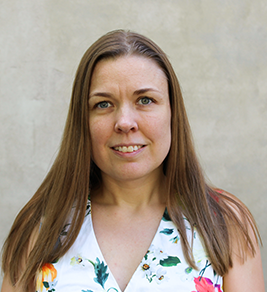This map shows the largest minority group by country of birth at the municipal level in 2018.

The figure shows the largest minority group in each of the municipalities and the proportion of the total municipal population made up by that group. For simplicity and for analytical purposes, the map shows the country group to which the largest minority belongs. For example, black shading on the map means that the largest minority group in that municipality comes from a single country within the EU-15 (e.g. Germany) and that people from that country alone make up over 5% of the population.
With the high levels of immigration to the Nordic countries in recent decades, there has been an increase in foreign-born populations in almost every municipality. Because of past and more recent immigration and settlement patterns, the largest minority group (defined by country of birth) among municipalities shows an interesting pattern.
While there has been increased immigration into the Nordic countries from outside the Nordic Region, intra-Nordic immigration remains considerable. Places, where people born in one Nordic country are the largest minority group in another, represent historical patterns of migration or more recent cross-border flows. People born in one of the EU-15 countries are the largest minority in 47 municipalities; most of them were born in Germany. The proportion of people from any single EU country in any municipal population is quite small, and never accounts for more than 5% of the population. A much larger category is that of people born in the EU accession countries, who represent the largest minority group in one-third of municipalities. This group includes people born in Poland or one of the Baltic States. The reason for separating people from the EU-15 and accession countries is that while people from both groups now have the same access to the labour markets in the Nordic countries, this was not always the case and the two groups have different migration histories.
People born in the former Soviet Union (including those listed as being born in the former Soviet Union, Russia or Ukraine but not the Baltic states) are the largest minority group in 100 municipalities. In most cases, the proportions are quite small, never more than 4% of the total municipal population. Another category is that of countries experiencing major conflicts or civil unrest. This category includes people born in Afghanistan, Eritrea, Iran, Iraq, Somalia and Syria. People born in one of these countries make up the largest minority group in 21% of municipalities. A final group are the 25 municipalities in which there are no foreign-born people; apart from one (Skorradalshreppur in Iceland), these are all in Finland.
Read the digital publication here.


